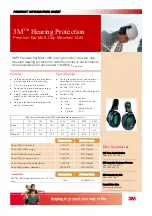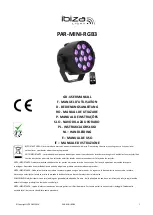
85038A/F/M
3-3
Use, Maintenance, and Care of the Devices
Visual Inspection
Visual Inspection
Visual inspection and, if necessary, cleaning should be done every time a connection is made. Metal
particles from the connector threads may fall into the connector when it is disconnected. One connection
made with a dirty or damaged connector can damage both connectors beyond repair.
Magnification is helpful when inspecting connectors, but it is not required and may actually be misleading.
Defects and damage that cannot be seen without magnification generally have no effect on electrical or
mechanical performance. Magnification is of great use in analyzing the nature and cause of damage and in
cleaning connectors, but it is not required for inspection.
Look for Obvious Defects and Damage First
Examine the connectors first for obvious defects and damage: badly worn plating on the connector
interface, deformed threads, or bent, broken, or misaligned center conductors. Connector nuts should move
smoothly and be free of burrs, loose metal particles, and rough spots.
What Causes Connector Wear?
Connector wear is caused by connecting and disconnecting the devices. The more use a connector gets,
the faster it wears and degrades. The wear is greatly accelerated when connectors are not kept clean, or
are connected incorrectly.
Connector wear eventually degrades performance of the device. Calibration devices should have a long life
if their use is on the order of a few times per week. Replace devices with worn connectors.
The test port connectors on the network analyzer test set may have many connections each day, and are
therefore more subject to wear. It is recommended that an adapter be used as a test port saver to minimize
the wear on the test set’s test port connectors.
Inspect the Mating Plane Surfaces
Flat contact between the connectors at all points on their mating plane surfaces is required for a good
connection. See
Figure 2-1 on page 2-3
. Look especially for deep scratches or dents, and for dirt and metal
particles on the connector mating plane surfaces. Also look for signs of damage due to excessive or
uneven wear or misalignment.
Light burnishing of the mating plane surfaces is normal, and is evident as light scratches or shallow
circular marks distributed more or less uniformly over the mating plane surface. Other small defects and
cosmetic imperfections are also normal. None of these affect electrical or mechanical performance.
If a connector shows deep scratches or dents, particles clinging to the mating plane surfaces, or uneven
wear, clean and inspect it again. Devices with damaged connectors should be discarded. Determine the
cause of damage before connecting a new, undamaged connector in the same configuration.
Summary of Contents for 85038A 7-16
Page 1: ...Keysight Technologies 85038A F M 7 16 Calibration Kits User s and Service Guide...
Page 2: ......
Page 3: ...85038A F M...
Page 6: ...85038A F M...
Page 9: ...1 General Information...
Page 15: ...2 Specifications...
Page 20: ...2 6 85038A F M Specifications Electrical Specifications...
Page 21: ...3 Use Maintenance and Care of the Devices...
Page 29: ...4 Performance Verification...
Page 32: ...4 4 85038A F M Performance Verification Recertification...
Page 33: ...5 Troubleshooting...
Page 38: ...5 6 85038A F M Troubleshooting Contacting Keysight...
Page 39: ...6 Replaceable Parts...
Page 44: ...6 6 85038A F M Replaceable Parts Introduction...
Page 45: ...A Standard Definitions...
Page 50: ...Index 4 85038A F M Index...
















































